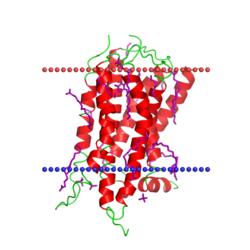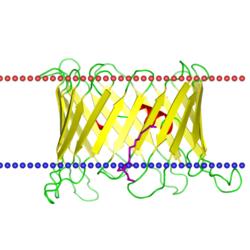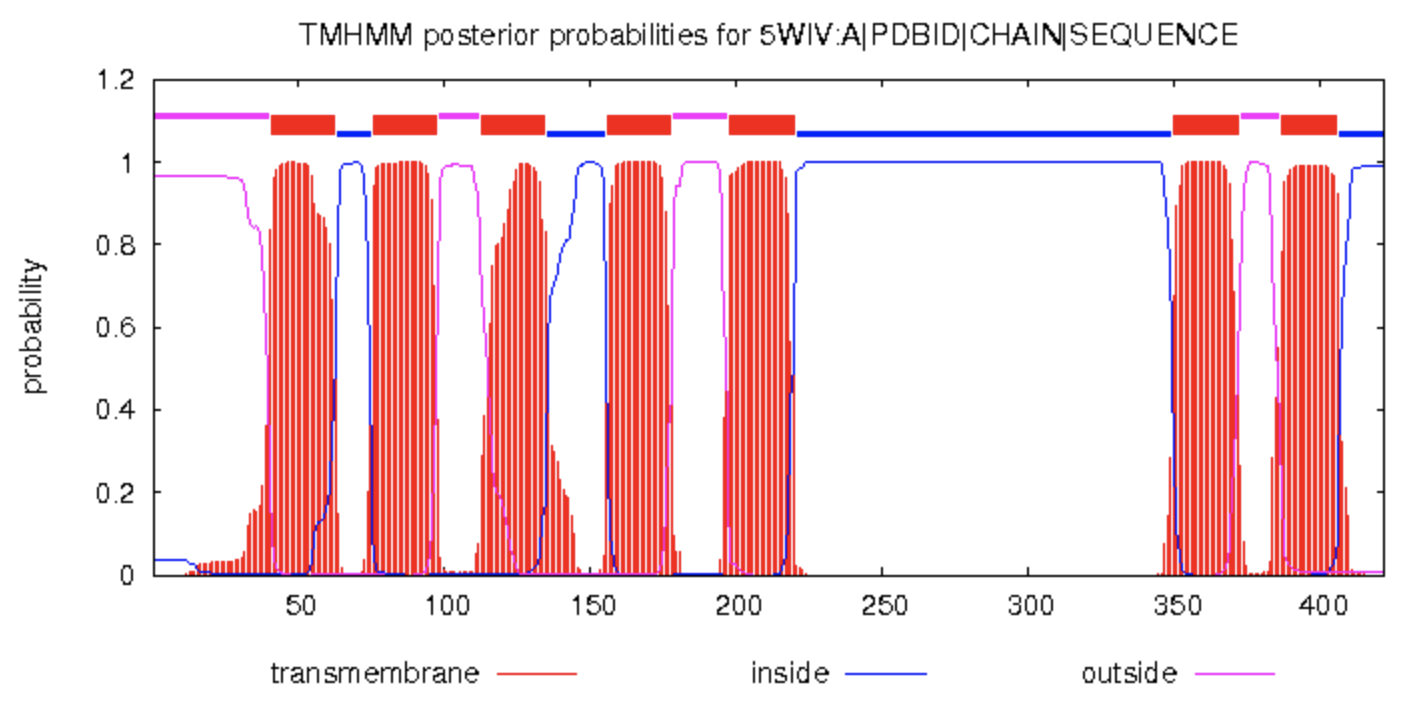- Hydrophobic Thickness: 31.8 ± 2.0 Å
- Helix coordinates: A - Tilt: 11° - Segments: 1( 34- 59), 2( 69- 93), 3( 109- 135), 4( 151- 171), 5( 192- 214), 6( 395- 416), 7( 428- 451)
- Average amount of residues: 22.7
- Localization: Eukaryotic plasma membrane
- Species: Homo sapiens
- Hydrophobic Thickness: 23.4 ± 1.1 Å
- Helix coordinates:
X - Tilt: 3° - Segments: 1(26-34), 2(38-47), 3(55-64), 4(69-76), 5(80-88), 6(94-103), 7(111-120),
8(122-131), 9(137-146), 10(149-156), 11(166-174), 12(178-185), 13(190-197), 14(202-210), 15(218-226), 16(231-238), 17(242-250), 18(255-263), 19(274-282) - Average amount of residues: 8.5
- Localization: Mitochondrial outer membrane
- Species: Mus musculus

Fig. 1. Dopamine D4 receptor

Fig. 2. VDAC-1 channel


